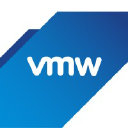Container & Kubernetes Security
Container and Kubernetes security focuses on protecting cloud-native applications through mechanisms like image scanning, network policies, and security contexts.
The security landscape of container and Kubernetes environments has evolved significantly, driven by the increasing complexity of containerized applications and the emergence of sophisticated threats. Key developments include container image scanning tools such as Tenable and AquaSec, which enable early detection of vulnerabilities during the CI/CD pipeline, thereby reducing the attack surface. Additionally, Kubernetes Security Contexts allow for granular control over pod privileges, enhancing the security posture by limiting root access and enforcing read-only root file systems.
Despite these advancements, specific attack vectors persist, including misconfigurations that can lead to unauthorized access and lateral movement within clusters. Vulnerabilities in container images, particularly those stemming from outdated libraries, remain a common issue, necessitating regular scanning and updates. Notable incidents, such as CVE-2020-8554, underscore the importance of securing critical components like the Kubernetes API server and etcd database. Current challenges include the need for continuous monitoring and the effective management of complex configurations across diverse environments.
Technical Deep Dive
Architecture Patterns
-
Pods and Containers: Pods are the smallest deployable units in Kubernetes, encapsulating one or more containers. Securing pods involves applying security contexts to limit privileges and restricting network communications. - Pros: Simplifies management of related containers, enhances isolation. - Cons: Misconfigurations can lead to privilege escalation.
-
Network Policies: Implementing network policies allows for control over ingress and egress traffic between pods. This is crucial for segmenting the network and preventing lateral movement. - Pros: Reduces attack surface, enhances security through segmentation. - Cons: Complexity in policy management can lead to misconfigurations.
-
API Server and etcd: The API server is the central management entity, while etcd serves as the key-value store for Kubernetes. Securing these components involves disabling anonymous access, using TLS encryption, and enabling audit logging. - Pros: Centralized management, data consistency. - Cons: Single point of failure if not properly secured.
Implementation Requirements
- TLS Encryption: Required for secure communication between kubelets and the API server, as well as for protecting etcd.
- RBAC (Role-Based Access Control): Essential for controlling user and service account access to the Kubernetes API server, enabled by default in Kubernetes 1.6 and later.
Integration Points and Dependencies
- Managed Kubernetes Services: Integration with cloud providers' managed Kubernetes services (e.g., GKE, AKS, EKS) requires configuring security settings specific to the cloud environment.
- Container Registries: Securely managing container images involves using trusted registries and scanning images for vulnerabilities before deployment.
Performance and Scaling Considerations
- Scalability: Kubernetes is designed to scale horizontally, but improper configuration can lead to performance issues. Ensuring proper resource allocation and network segmentation is crucial.
- Resource Constraints: Overprovisioning or underprovisioning resources can impact performance and security. Monitoring and adjusting resource allocations based on workload demands is essential.
Security Boundaries and Trust Assumptions
- Namespace Isolation: Using namespaces to separate workloads helps contain attacks and limit the impact of mistakes or malicious actions.
- Trust Assumptions: Assuming all components within the cluster are trusted can lead to security breaches. Implementing least privilege access and monitoring for anomalous activity is crucial.
Failure Modes and Recovery Strategies
- Node Failures: Implementing high availability and load balancing can help mitigate node failures. Regular backups and disaster recovery plans are essential.
- Pod Failures: Kubernetes has built-in mechanisms to restart failed pods. However, scaling suspicious pods to zero or destroying and restarting instances can help contain breaches.
Common Use Cases
- Implementing CI/CD pipelines with integrated image scanning to catch vulnerabilities early, ensuring compliance with standards such as PCI DSS.
- Utilizing Kubernetes Network Policies to enforce strict traffic controls between microservices, thereby adhering to the principle of least privilege.
- Deploying RBAC to manage access controls for developers and operators, reducing the risk of unauthorized access to sensitive resources.
- Configuring audit logging for the Kubernetes API server to meet regulatory requirements such as GDPR and HIPAA, enabling traceability of actions taken within the cluster.
- Integrating cloud-native security tools like Prisma Cloud or Sysdig to provide continuous monitoring and compliance checks across multi-cloud Kubernetes environments.

VMware Carbon Black Container
A security solution for Kubernetes environments that provides visibility, hardening, and runtime protection for workloads.

Falco
Falco is a cloud native runtime security tool for Linux that detects and alerts on abnormal behavior and potential security threats in real-time by monitoring system calls and kernel events.

Prisma Cloud Container Security
A security framework for containerized environments, particularly in Azure Container Registry and Azure Kubernetes Service (AKS).

Harbor
An open source trusted cloud native registry project that stores, signs, and scans content.

Trend Micro Cloud One – Container Security
A solution for securing containerized applications throughout their lifecycle, integrating into CI/CD pipelines.

kube-bench
A tool to ensure Kubernetes deployments adhere to industry-standard security best practices as outlined in the CIS Kubernetes Benchmark.

Twistlock
Twistlock, now integrated into Palo Alto's Prisma Cloud, addresses the complex security challenges inherent in containerized and cloud-native environments.

Cosign
Code signing and transparency for containers and binaries

Binary Authorization
A security service that ensures only trusted and verified container images are deployed to production environments on Google Cloud.

Kubescape
A security platform for Kubernetes that identifies and remediates misconfigurations, vulnerabilities, and compliance issues.

Qualys Container Security
Qualys Container Security provides tools for discovery, inventory, and real-time tracking of container events, utilizing Cloud Agents, Scanners, and a Container Sensor for vulnerability analysis.

Kubernetes Goat
Kubernetes Goat is a "Vulnerable by Design" cluster environment to learn and practice Kubernetes security using an interactive hands-on playground